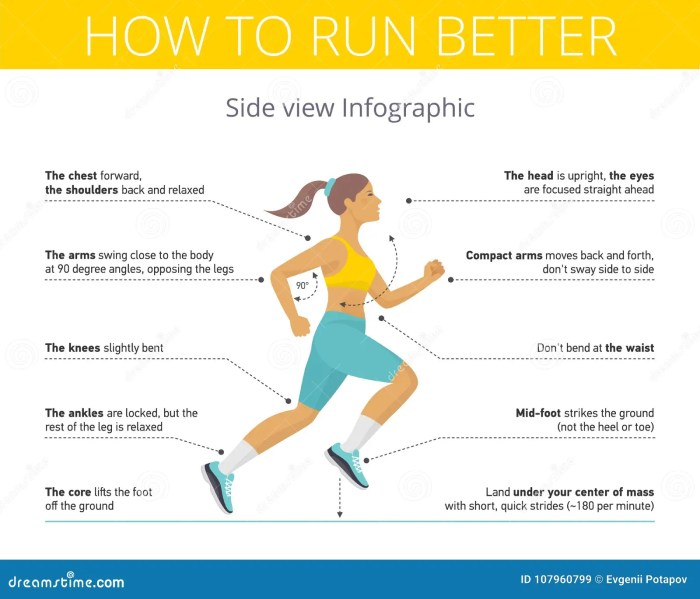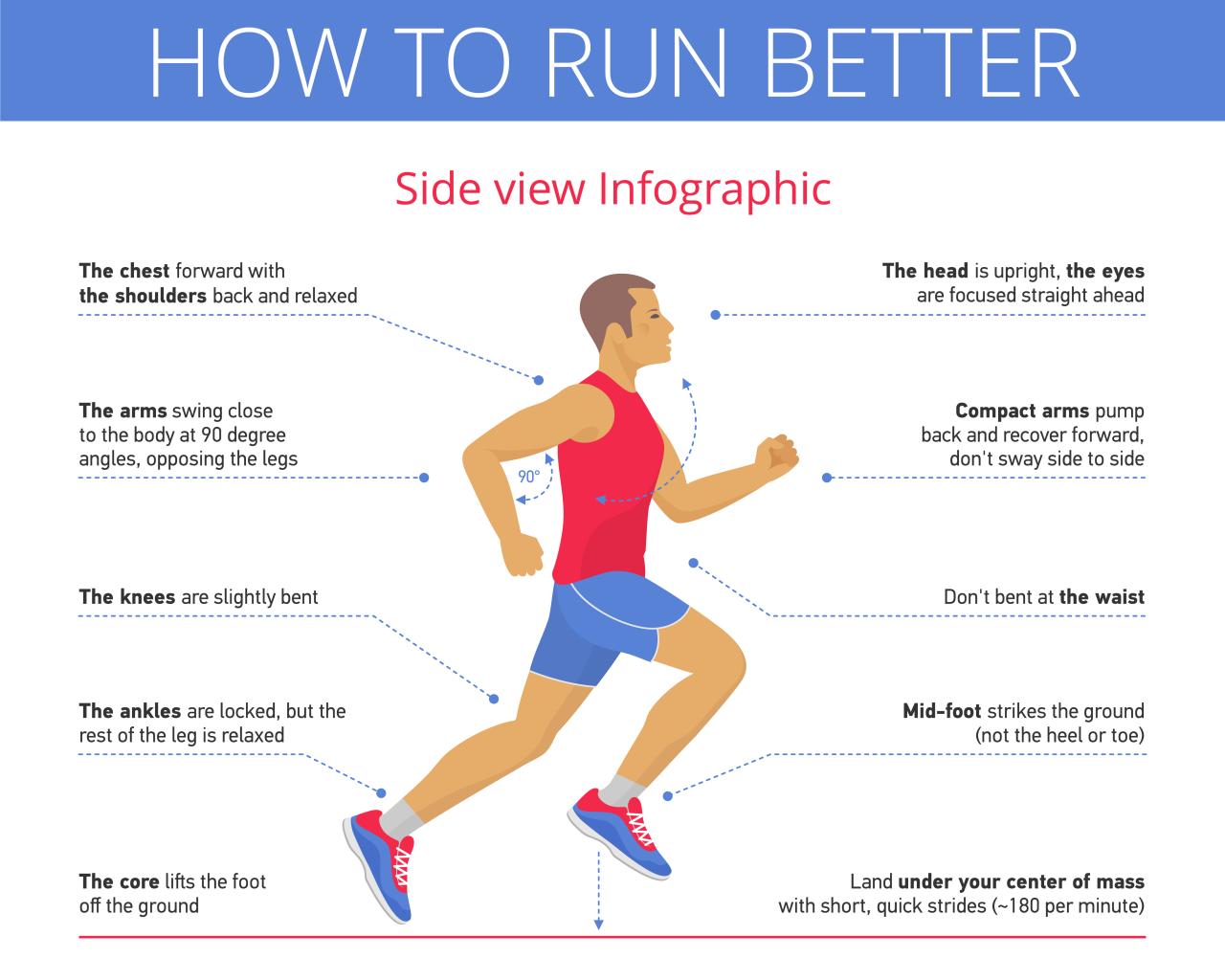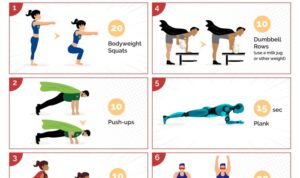Running techniques are the key to unlocking your full potential on the track or trail. Get ready to dive into the world of proper form and efficiency, where every step counts towards your success.
Exploring the different types of running techniques and how they impact your performance is crucial for any runner looking to up their game.
Importance of Proper Running Techniques

Proper running techniques are crucial for both beginners and seasoned runners. By maintaining correct form, runners can significantly reduce the risk of injuries and overuse strains that are common in the sport. This is especially important for long-distance runners who put their bodies through rigorous training and races.
Injury Prevention
- Proper running techniques help distribute the impact of each stride evenly throughout the body, reducing the strain on specific muscles and joints.
- Correct form ensures that the body is aligned properly, minimizing the risk of developing issues like shin splints, IT band syndrome, and plantar fasciitis.
- By avoiding overstriding and maintaining a good posture, runners can prevent common injuries that may sideline their training progress.
Running Efficiency
- Efficient running techniques allow runners to use their energy more effectively, resulting in better overall performance.
- By focusing on factors such as cadence, arm swing, and foot strike, runners can optimize their movement patterns and conserve energy during long runs.
- Improving running efficiency not only enhances speed but also helps runners maintain their pace over longer distances without fatiguing quickly.
Performance and Endurance
- Proper running techniques directly impact a runner’s performance by maximizing their speed and endurance capabilities.
- By mastering techniques like breathing control, stride length, and body positioning, runners can push their limits and achieve new personal records.
- Consistently practicing correct form can help build endurance over time, allowing runners to tackle longer races and challenging terrains with confidence.
Common Running Techniques

When it comes to running techniques, there are several different styles that runners employ. These techniques can have varying impacts on muscle engagement and joint health, so it’s important to understand the differences between them.
Forefoot Strike
A forefoot strike is when a runner lands on the ball of their foot before rolling through to the toes. This technique engages the calf muscles more and may reduce impact on the knees compared to other techniques. It is often used by sprinters and those aiming for faster speeds.
Midfoot Strike, Running techniques
In a midfoot strike, the runner lands on the middle of their foot, distributing the impact more evenly across the foot. This technique can help reduce stress on the calves and Achilles tendon, making it a popular choice for long-distance runners.
Heel Strike
Heel strike involves landing on the heel first, which can lead to increased impact on the joints, especially the knees. However, this technique may be beneficial for beginners or those with lower leg injuries as it provides more cushioning and stability.
Elements of Good Running Form
To maximize running efficiency and prevent injuries, it is crucial to focus on various elements of good running form. These elements include posture, arm swing, foot strike, and cadence.
Posture
Maintaining an upright posture while running is essential. Keep your head up, shoulders relaxed, and core engaged. This alignment helps in proper breathing and efficient energy transfer throughout the body.
Arm Swing
Your arms should be bent at a 90-degree angle and should swing naturally with each stride. The movement of your arms counterbalances the motion of your legs, helping you maintain balance and momentum.
Foot Strike
Striking the ground with your midfoot or forefoot rather than your heel can reduce impact and improve running efficiency. Aim to land softly and roll through the step to propel yourself forward.
Cadence
Cadence refers to the number of steps you take per minute. A higher cadence typically leads to better running form and reduced risk of injury. Aim for around 180 steps per minute for optimal efficiency.
By focusing on these elements of good running form, beginners can improve their running technique and enhance their overall performance. Practice these tips consistently to develop a smooth and efficient running stride.
Drills and Exercises to Improve Running Techniques
Improving running techniques requires a combination of specific drills and exercises that target different aspects of form and efficiency. These drills help runners develop strength, flexibility, and coordination, leading to better performance and reduced risk of injuries.
1. High Knees
High knees drill focuses on improving knee lift, hip flexor strength, and overall running form. The purpose is to enhance stride length and develop faster leg turnover. Start by standing in place and lifting your knees as high as possible while running in a controlled motion. Aim for quick, light foot strikes and maintain an upright posture throughout the drill.
2. Butt Kicks
Butt kicks exercise helps improve hamstring flexibility, ankle strength, and running efficiency. The goal is to enhance lower body coordination and speed development. Stand in place and kick your heels towards your glutes in a rapid motion, focusing on a quick turnover and minimal ground contact time. Keep your core engaged and maintain a relaxed upper body posture.
3. Strides
Strides are short, fast runs that help improve running economy and speed. The purpose of this exercise is to enhance turnover rate, stride length, and overall running efficiency. Start by jogging at an easy pace, then gradually accelerate to near-sprint speed for about 100 meters. Focus on smooth and relaxed form, proper arm swing, and quick turnover. Gradually decelerate back to a jog to recover before repeating the stride.
